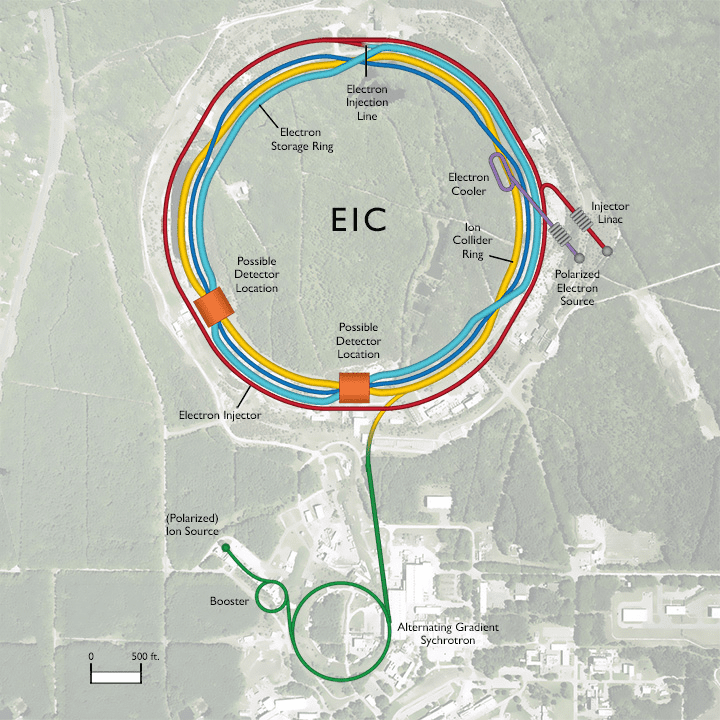PageContent
EIC: The world’s most powerful microscope
Local Manager:
+ Roberto Preghenella
 EIC (Electron Ion Collider) is a future electron-proton and electron-ion collider to be constructed in the United States in this decade and foreseen to start operation in 2030. The accelerator constitutes the major US project in the field of nuclear physics and it will surely be one of the most important scientific facilities for the future of nuclear and subnuclear physics.
EIC (Electron Ion Collider) is a future electron-proton and electron-ion collider to be constructed in the United States in this decade and foreseen to start operation in 2030. The accelerator constitutes the major US project in the field of nuclear physics and it will surely be one of the most important scientific facilities for the future of nuclear and subnuclear physics.
EIC will allow one to explore the secrets of QCD (quantum chromodynamics, the theory of strong interactions) and to understand the origin of the mass and the spin of the nucleons by studying how quark and gluons – the fundamental building blocks of QCD – combine in complex interactions that produce the observed properties of protons and neutrons and of the nuclear matter. Moreover, the collisions of electrons with ions will provide extraordinary tridimensional images of the nuclear structure at very high precision.
The international EIC community involves experimental and theoretical researchers and it is organised in a working group – the EIC User Group – that includes more than 1000 physicists from more than 200 laboratories and Universities from all around the world. In the year 2018 the INFN groups interested in the experimentation and in the construction of detectors for the EIC have started the EIC-NET project, funded by INFN, which manifests the broad involvement of Italian physicists. In January 2020 the Department of Energy (DOE) of the United States has announced that the EIC will be constructed at the Brookhaven National Laboratory (BNL) located in Upton, New York, on Long Island.
The activities of the group in Bologna are linked to the study and development of particle-identification detectors for high-momentum hadrons by exploiting the RICH (ring imaging Cherenkov) technique. In particular, the interest of the group is focused towards the identification of innovative optical sensors for the detection of single photons from












